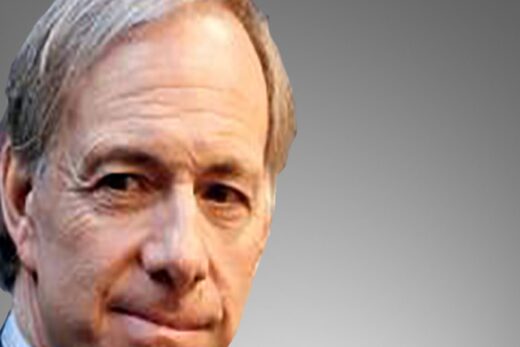A CAGR of 16 per cent does not mean a 16 per cent return every year, year after year – it is actually the total holding period return expressed in annual terms. Equity markets, by nature, are volatile and cyclical. There could be period of doom and gloom, where no returns — positive or negative — are made and there are periods of boom, and where markets seem to be rising every single day.
Legendary investor Warren Buffet has said: “It’s not about timing the market but about the time in the market.” Hence, to reap the benefits, patience is key and one has to remain invested over longer periods.
The objective of investing in equities is to meet the financial goals of life: retirement, children’s education, marriage, medical emergency, home, etc. Hence, it is important for investors to achieve these goals, and smoothly.
Higher volatility causes higher fluctuation, which can lead to sharply falling stock prices in various phases of market. In most such phases in the past, it has been observed that investors sold their holdings instead of adding. The reason is simple: the human mind doesn’t function rationally in a state of duress or panic. While large, mid and small caps have given similar returns historically, the journey is much smoother in the largecap category (lower volatility, hence lower risk).
Since large caps have lower volatility and lower risk, the chances of one making a decision in haste or panic are much lower. With fewer instances of panic, there is a higher probability of investors attaining their goals.
Large caps are the top 100 companies by market cap. These companies are generally leaders in the segment in which they operate, and also have a reasonably long history of experiencing multiple cycles. Their ability to emerge winners in these cycles and continuing to lead the segment speaks a lot about their inherent strengths.
A few examples of successful wealth creators in the history of capital markets have been higher return on equity (RoE) and lower debt to equity (D/E). A look at the 10-year returns of Nifty 500 constituents reveals that top 10 per cent gainers had significantly higher average RoE and lower average D/E compared to the bottom 10 per cent.
 ET CONTRIBUTORS
ET CONTRIBUTORSRoE reveals the efficiency of a company at turning shareholder investments into profits. The higher the ROE, the more capital efficient is the company, and the greater its ability to create value for shareholders.
Debt to equity ratio is a measure of the degree to which a company is financing its operations through debt versus owned funds. While it is good for a business to take debt to ensure it has adequate resources to run the operations efficiently, perennially high dependence on debt for funding raises the risk for the company.
Every business goes through cycles. While higher debt can be easily sustained in an upcycle, and also enhances values at times, the same debt comes to haunt in a downcycle.
 ET CONTRIBUTORS
ET CONTRIBUTORSMarket leadership, a long and successful history, higher RoE and lower D/E are possibly the reasons for relatively lower volatility in the large cap segment compared to the broader markets. An investor needs to have a judicious mix of large, mid and small caps in the portfolio. However, owing to their superior risk-adjusted return yielding capabilities, a higher allocation should be in large caps.
The next logical step is to decide whether to invest in active large cap funds or index funds – an obsessive debate these days that centres around the statement: Active large cap funds have not been able to beat the benchmark in the last 2-3 years, hence passive investing is better in the large cap category.
Equity markets are cyclical and hence equity investment products’ return profile is inherently cyclical. While passive investing has its own benefits, however, selecting passive funds on the basis of the above statement (primarily) amounts to promoting the category on the basis of recent past performance, which is exactly the opposite of their warning label: Past performance is no guarantee of future results.
The last 2-3 years saw an unprecedentedly narrow market where the bulk of index returns came from top five names. On many occasions, a few of these names had over 10 per cent weight in index – the upper limit for an active fund in a particular company. If one expects these special circumstances will continue forever in the future, then possibly the initial statement is correct, otherwise some serious thinking is required.
We live in a country where the first insurance business got listed less than five years ago, several industry leaders in various sectors are either not listed yet or have very little representation in frontline indices. Specialty chemicals, construction, agrochemicals, auto ancillaries, clean energy and white goods are few amongst many sectors that have little representation in frontline indices.
An active fund can invest in such leaders, whereas a passive fund cannot. Again, there are several examples of companies that were part of the frontline indices, but their financial earnings were falling, or issues were emerging in their corporate governance. An active fund can easily avoid such companies, but a passive fund will remain invested in it.
Winners keep rotating. The late 90s belonged to the IT sector, the 2003-07 rally was all about infrastructure (and real estate), and from 2008 till now, the consumption sector led the way along with financials. Interestingly, consumption and financial stocks were just 20 per cent of frontline indices in end-2008 compared to cyclicals (infra and capex-heavy sectors) at around 64 per cent.
An active fund could have easily switched from capex-heavy to consumption and financials, but a passive one is stuck with what’s there in the index.
The logical reason to own a passive fund should come from the outcome of multiple rounds of research done globally that concludes that the bulk of the returns and their outperformance vis-a-vis investment goals come from being in the right asset class as opposed to being in the right fund in any asset class.
For example, in 2017, it was more important to be in mid and small caps as opposed to the choice of a particular fund. Also in the last few years, it was more important to have global exposure to participate in the global rally (especially US).
Just the way an active fund manager needs to take positions away from an index to beat it, even an investor needs to select few right active funds if one wishes to beat the market for equity allocation as a whole. By definition, active funds attempt to beat the benchmark (they succeeded materially till 2017, but the last 2-3 years have not been in their favour).
However, passive funds do not even attempt to beat the benchmark but seek to replicate them. You subtract the cost of the fund (although small) and you can be almost sure of an underperformance. A probability of around 80 per cent of beating the benchmark through active funds seems mathematically better than the chance of virtually around 0 per cent with a passive fund.
One more statement generally made to push passive funds in the large cap category has been: Large cap funds have to invest 80 per cent of the money in top 100 names, hence there is very little room for alpha creation. It is interesting to note that the broadest equity index Nifty 500, which covers over 90 per cent of NSE’s market cap, also has over 80 per cent in large caps. Hence 80 plus 20 can theoretically provide similar diversification as Nifty 500.
Interestingly, most flexi cap funds also have significant exposure to large caps. The 80 per cent limit gives clarity and assurance to the investor as well as a reasonable scope to add value through broader market participation – it is an opportunity with transparency and not a hindrance.
(Alok Agarwal is Senior Fund Manager for Equity at PGIM India Mutual Fund. Views are his own)



